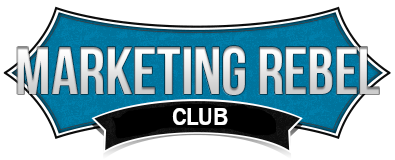Power Reading: Third Chapter Example
FROM A TEXTBOOK ON BUSINESS ADMINISTATION
(I have numbered each paragraph at the end)
Chapter2: Five Roads To Cost Reduction
Every management is faced with a continuing need to effect cost
reduction. Somehow or other we think of these reductions as available
principally in the manufacturing process, but this is not the sole area for
expense reduction. There are at least five channels through which
important savings can be effected. These are (1):
1. Raw materials.
2. The costs of capital equipment
3. Manufacturing costs
4. Sales expense
5. General and administrative overhead expense (including the office). (2)
Although there are some procedures in common which you can use
in endeavouring to reduce expenses along these five avenues, for the most
part the approaches must be different. (3)
Road 1: Raw Materials
Raw materials costs vary greatly with industries. Most companies
have long since worked out the average percentage of the sales dollar paid
for raw materials and supplies. If you can make a comparison of this
percentage for your company against other companies in your industry, you
may have an excellent starting point. And even where you can’t do this, or
the comparison is favourable to your company, it nevertheless may pay you
to study the ways of lowering the cost of raw materials. Here are the
principal devices which companies have used (4):
1. Development of carefully prepared purchasing specifications, which
demand raw material which is good enough for your manufacturing
process but not of such high quality that your costs go up without a
compensating increase in the price of your ultimate product. (5)
2. Inspection of incoming materials to make certain that they meet these
specifications. (6)
3. Tracing back difficulties in the manufacturing process to raw materials
imperfections. (7)
4. Modifications of manufacturing processes to eliminate the necessity for
certain raw materials and supplies. (8)
5. Substitution of other kinds of raw materials. (9)
6. Control over the sources of raw materials either by purchase of supply
sources (vertical integration) or by long term contractual arrangements.
(10)
Road 2: The Costs of Capital Equipment
Filed upon manufacturing costs and material costs must be cost of
capital equipment used. Typical of such costs would be depreciation,
replacement, maintenance and interest on borrowed capital. (11)
A great many companies tie up a lot of money in semi finished or
finished inventories. It’s useful to make an occasional check as to the
amount so tied up and compare it with previous checks. (12)
Because of inventory pricing policies used by accountants at the
close of the year, many a company goes through the year thinking it has
had a profitable operation, only to discover that the inventory pricing has
sharply reduced the expected profit. (13)
In chapter 4 we shall consider capital financing in more detail, so
we shall not make further comment here. (14)
Road 3: Manufacturing Costs
Manufacturing costs normally consist of labour plus material plus
manufacturing overhead. (15)
Labour opens up a large area for study. It includes proper original
selection, adequate training of workers, incentives, supervision, standards
and control. It may involve aptitude testing, skill training, time and motion
study, work simplification, etc. (16)
Reduction of manufacturing overhead may involve studies of
supervision, maintenance and other indirect labour; of inspection and
quality control; of fuel, light and power; of fire, safety and insurance
protection; of idle equipment charges; of proper utilization of the space
available; etc. (17)
Design for new equipment for production involves consideration of
manufacturing methods and the capital investment required. (18)
Proper lighting has been responsible for worthwhile increases in
productivity and reduction of accidents. Improvements have also resulted
from painting of walls and machines, reduction in noise, better ventilation,
etc. (19)
Materials handling is usually another fertile field for investigation.
The movement and storage of raw materials, work in progress and finished
goods can add considerably to the final cost of manufactured goods. (20)
Studies of productive operation may readily include operations
research, whereby mathematics is applied to determine the optimum or best
manufacturing conditions. Typical would be job lot size to derive the
greatest advantage from manufacturing operations; proper inventories of
raw materials, partial assemblies, semi-finished products and finished
products. (21)
Road 4: Sales Expense
Over the present century there has been a reversal of the
relationship of manufacturing costs to marketing costs. At one time
manufacturing costs represent more than half the sales price of an article,
but these costs have relatively receded so that today, in most companies,
the sales costs represent more than half the sales price. Contributing to this
increase in sales costs have been such items as warehousing, transportation,
advertising, packaging, direct sales costs, and the constant price attrition of
competition. Sales overhead, too, has increased through the addition of
market research, sales promotion specialists, automatic vending equipment,
more sales supervision. (22)
Road 5: General and Administrative Expense
The fifth avenue of cost reduction consists of analysis of general
and administrative expense. In the normal company these cover such items
as salaries of executives and office employees, office expense, interest,
property depreciation, taxes, insurance, donations, legal fees, consultants,
investigation of possible mergers, economic services and other general
business expenses. (24)
IN SUMMARY:
The five roads to cost reduction are:
1. Raw materials
2. The costs of capital equipment
3. Manufacturing costs.
4. Sales Expenses
5. General and administrative expense. (26)
Once possible economies have been uncovered it is necessary to
prosecute them vigorously, lest they fail of accomplishment through
inertia and resistance to change. (27)
